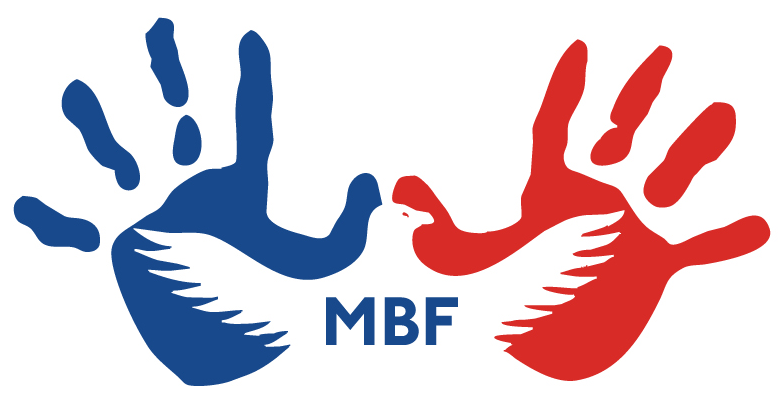Every child needs adults in their life they can talk to if they have been hurt or are concerned about their safety. They need adults they can trust to help keep them safe. And their Safe Adults need to know how to help if a child ever comes to them to report they have been harmed. Read on to learn how you can be a Safe Adult and find additional resources.
Consider these facts:
- 1 out of 4 children will be bullied, 1 out of 5 will be cyberbullied.
- 1 out of 7 children ages 10-17 has been sexually solicited online.
- 1 out of 10 children will be sexually abused before they reach the age 18.
- 90% of abuse is by someone a child knows and trusts, not a stranger, (30% by a family member).
The concept of Safe Adults is taught to students as part of MBF Prevention Education Programs. This same concept can be taught to all children by parents or other concerned adults using the information below.
Who is a Safe Adult?
A Safe Adult is someone a child can go to if they ever feel unsafe, have ever been hurt, or if they’re not sure if a situation is unsafe. Safe Adults should be someone who:
- is an adult that can get them help if they’re ever hurt or unsafe.
- doesn’t break the Safety Rules, or try to get the child to break them.
- the child feels comfortable with and can easily talk to about things that may be difficult to talk about.
- the child can trust to keep them safe.
Children should also be taught that if they have a Safe Adult now, and sometime in the future that Safe Adult doesn’t make them feel safe, they can always choose another Safe Adult.
Why do we ask children to identify “Safe Adults” instead of “trusted adults?”
Many children have adults in their lives they trust. And many children have also had trusted adults who have hurt them. Simply identifying trusted adults does not ensure those adults are safe. So, in addition to an adult a child trusts, we identify other factors that makes them a Safe Adult, such as someone that can and will help them, someone who doesn’t break the Safety Rules or try to get the child to break them, etc.
How many Safe Adults should a child identify?
We encourage children to identify at least two Safe Adults; one who lives in their home, and one who lives outside their home, although they can identify more. It is important to identify one in the home and one out of the home in case abuse occurs in the home, or the Safe Adult in the home is not available when the child needs to talk.
What should children talk about with their Safe Adults?
Children should be encouraged to talk with their Safe Adults any time they feel unsafe, or any time they aren’t sure if a situation is safe. They would want to talk to them:
- any time they are hurt, or have been hurt in the past.
- about anything unsafe that is happening, or that has happened, to them or a friend.
- about Red Flags they have spotted that tell them someone, or something, might not be safe.
- any time they aren’t sure whether a situation or person is unsafe.
What is the role of a Safe Adult?
A Safe Adult needs to understand that if a child tells them they have been hurt, or if they suspect a child is being hurt or is unsafe, they need to act in the best interest of the child. It is an adult’s responsibility to protect children. They can help by:
- listening carefully to what the child tells them.
- telling the child they believe them.
- being aware of uncomfortable feelings and controlling their own emotions if a child discloses abuse.
- acting right away to help the child:
— report bullying to the school or organization where it occurred.
— report unsafe online behaviors to law enforcement or the CyberTipline at 800-843-5678. — report child abuse to your state child welfare agency. (Click here for a list of state child welfare agency contact information.)
To learn more about responding to a disclosure of child abuse or bullying, parents and Safe Adults can visit our resources page for more help.
What if a Safe Adult is not helpful?
Children need to keep telling Safe Adults they do not feel safe or have been hurt until someone LISTENS and DOES something to help them. This is another reason we encourage children to have multiple Safe Adults.
Keep in mind that children might find it hard to talk to a Safe Adult. Embarrassment, shame, fear that they will get in trouble or get someone else in trouble, fear that they won’t be believed, or fear of breaking a promise can all make reporting difficult for a child. Because of this, we also teach children to identify a Safety Buddy or a Safe Friend, because sometimes it’s easier to talk to a Safe Adult if a child has someone else with them. A Safety Buddy or Safe Friend is a good friend who is trusted and easy to talk to. They are someone who will go with the child to talk to a Safe Adult, but they are not someone to tell instead of a Safe Adult.
What can Parents and other concerned adults do?
- Ask your child who their Safe Adults are and assist them with identifying at least two Safe Adults.
- Let your child know that telling a Safe Adult about bullying, abuse, or other unsafe situations is helping, not tattling or snitching. Tell them they can always come to you, or to another Safe Adult, and you will listen and support them.
- Let your child know you trust their instincts and it is okay for them to trust their instincts as well.
- If your child discloses that they don’t want to be around a particular person, such as a babysitter, relative, or family friend, don’t force them.
Learn more:
- Learn more by taking our one-hour online courses provided at no cost:
- Recognizing & Reporting Child Abuse & Neglect
- Real World Safety: Protecting Youth Online and Off
- Protecting Children from Child Sexual Abuse
- Preventing, Recognizing, and Responding to Human Trafficking
- Download our mobile app, “Child Safety Matters,” at no cost from the App Store or Google Play.
- Like and follow our social media pages to stay up to date on the latest issues and concerns regarding children’s safety and to learn more about how to help protect all the children in your life.
Download this information as a PDF
Additional resources
Explore these additional resources for more information about protecting children. Also visit our Resources and #KindVibes pages.
Safety Brief: The 5 Safety Rules
Safety Brief: Discussing Sensitive Topics
Safety Brief: Identifying & Reporting Bullying
Safety Brief: Identifying & Reporting Abuse

